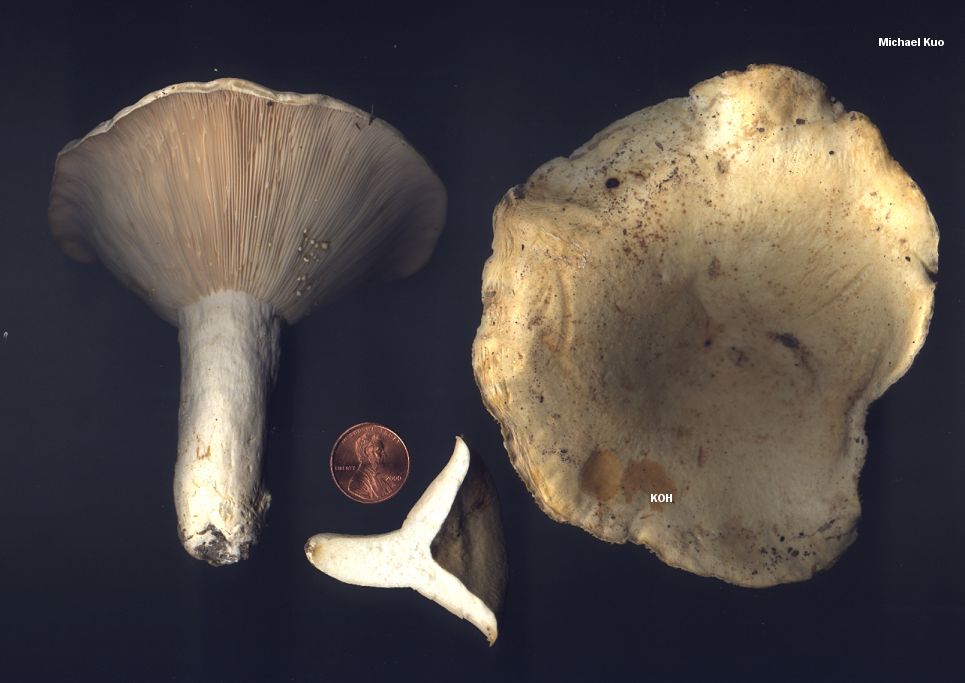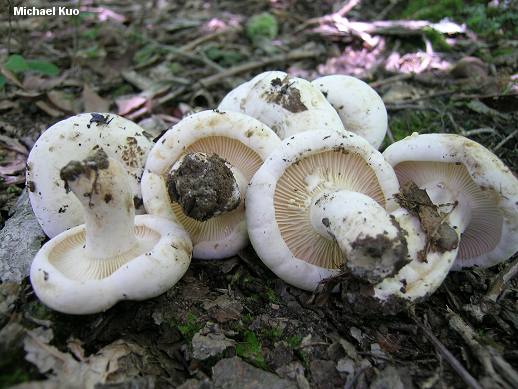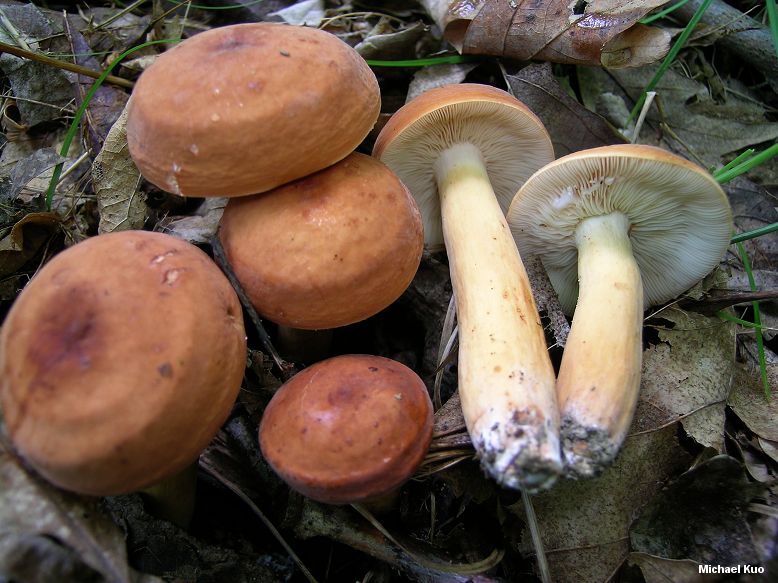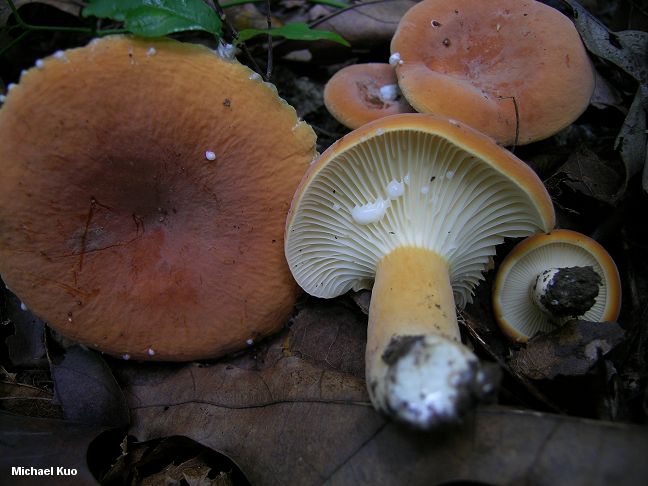by Crystal Davidson
The inaugural Ohio Mushroom Festival was held on September 21-24, 2023, in Garrettsville, Ohio, attracting over 500 mushroom enthusiasts. The event took place at Southington Off-Road Park, which is situated on over 1,500 acres. While the park featured an existing campground, the festival’s founder, Vint Westley, labored with love to spruce up and expand it just for the festival. Much of the property was wooded, with some existing trails, so many of the forays were conducted onsite. The sandy campground has a good mix of trees, oak and sycamore dominant with beautiful white birch sprinkled throughout. This land was also home to a few unusual plants, such as sundews (Drosera rotundifolia), wild cranberries (Vaccinium macrocarpon), and orchids (Spiranthes arcisepala), as noted by some of the presenters. To ensure the greatest diversity of finds, some later forays were held offsite.

Ohio Mushroom Society board member Kyle Canan and his team at Ohio Mushroom DNA Lab accepted many samples for free DNA sequencing. Several specimens were cataloged and accessioned into the University of West Alabama Herbarium by Assistant Curator of Fungi Alisha Millican. This was done with an immeasurable amount of assistance in documentation and organization from fastidious John Plischke and others. Both daytime and nighttime UV flashlight forays were offered, giving attendees the opportunity to hike alongside Walt Surgeon, Alan Rockefeller, Mandie Quark, Jim Sayers, Don King, Mycology Mike, James Mann, Anisha Kumra, Kevin McLane, Sherab Chen, Johnathan “Scooby” Bohla, Raymond James, and myself. One particularly intriguing specimen, both during day and night time, was this fungus encrusted deer skull found partially buried in the dirt by Alisha, which fluoresces under the blacklight!

Of the hundreds of specimens found, over 150 species were documented on iNaturalist, which can be viewed here:
A few notable finds included Trichoglossum (Hairy Earth Tongue), Laetiporus sulphureus (Chicken of the Woods), Rutstroemia, Grifola frondosa (Hen of the Woods), Mucronella, Psilocybe caerulipes (Blue Foot), Thuemenella cubispora, Cyptotrama chrysopepla (Golden Coincap), and Jafnea semitosta.






While many folks have dreamed of a locally grown mycofest, the Ohio Mushroom Festival was Vint’s brainchild. He carefully assembled the team of forays leaders, identifiers, presenters, vendors, and volunteers to ensure that all fungus fanatics were represented. In addition to the handful of foray leaders and identifiers who doubled as presenters, programs were offered by Cara Manigold, Michael Wilson, Travis Tyler Fluck, Craig & Michelle Tomko, Carly Conrad, Cody Detmer, Shannon Leahy, Ashley Avocado, Chad & Michelle Fritz, Kate Miller, John Whelton & Lyndsey Sytopkey, Mallory Saunders, Nick & Ashely Keller, Joe Gergley, and organizer Vint. Topics were widespread, so that every mycophiles’ niche interests were explored, from cooking to cultivation, photography to identification, Amanita partaking, kombucha making, and spiritual reconnection with nature through yoga and sound baths.


Each evening concluded with performances from multiple musical acts, which kept the crowd grooving until bedtime… though not late enough to interfere with the following morning’s forays. Saturday evening, however, was punctuated by both the lyrical freestyling of Fungi Flows and the burning of the Amanita mushrooms! The flaming fungi were set up in front of a large rock cliff face, creating a lovely illuminated stone backdrop for the festival goers. Several delicious food trucks kept anyone from getting hangry throughout the weekend, and even the hot dog vendor managed to incorporate some oyster mushrooms as a creative wiener topping.


As can be expected for any first time event, there were some limited unexpected opportunities for improvement, but these were very few. Unfortunately, some of the presentations were difficult to hear due to the sound person getting COVID just before the festival, but some last-minute pivoting by the festival staff adjusting locations of some activities helped to reduce surrounding background volume. The weather beforehand could have been better behaved and precipitated a bit more. However, the festival was well organized and ran quite smoothly overall, and guest feedback was impressively positive, which was reflective of the dedicated efforts of the volunteer staff.

If you missed your opportunity to attend in 2023, have no fear; because it was such a great time last year, Vint has decided to host the 2024 Ohio Mushroom Festival on September 12-15th. The festival has also been expanded to include a Morel Foray on May 4th. This year’s festival will be held at Joe Bottoms Campground, in Hammondsville, Ohio. Tickets for the Morel Foray initially sold out, but a few more were released and are still available. Tickets for either event and other details are available at ohiomushroomfestival.com.




























